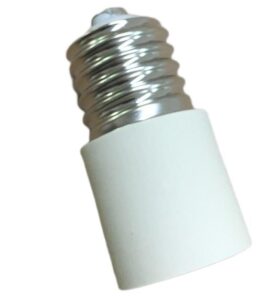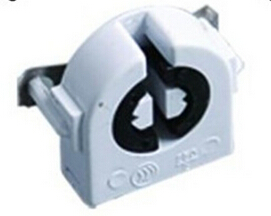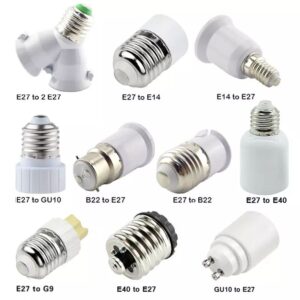If you use a 250V lamp holder with a 120V system, there are some safety and performance issues to consider. You need to understand the voltage differences to avoid creating an electrical hazard.
Yes, you can use a 120V bulb in a 250V lamp holder, as long as the actual power supplied is 120V. The lamp holder’s voltage rating is simply the maximum it can handle.
We’re going to talk about how the different voltage ratings impact lamp holders, light bulbs, and your electrical system.

Can I put a 120V bulb in a 250V lamp?
Yes, you can place a 120V bulb in a 250V-rated lamp holder, but only if the actual voltage being supplied is 120V. The lamp holder’s 250V rating means it can safely handle up to 250 volts, but it can still function properly with lower voltages such as 120V.
It’s important to note that the voltage rating on the lamp holder refers to the maximum it can handle without being damaged. Therefore, using a 120V bulb in a 250V-rated holder on a 120V circuit is completely safe, provided the electrical system is supplying 120 volts. This setup is common, particularly in fixtures sold globally, as the 250V rating simply provides more versatility for higher voltage regions.
Is 120V compatible with 250V?
No, 120V and 250V are not directly compatible because they represent different levels of electrical potential. 120V is commonly used in North America, while 220-250V is standard in many parts of Europe, Asia, and other regions. If you were to connect a 120V device to a 250V supply without a transformer or voltage converter, the excessive voltage could damage the device or even cause a fire.
However, in the context of a lamp holder, the voltage rating is the maximum it can handle. A lamp holder rated for 250V can be used with a 120V supply as long as the bulb is also rated for 120V. But you cannot directly use a 120V device on a 250V power source without converting the voltage.

Can I plug a 250V cord into a 120V outlet?
Technically, a 250V-rated power cord could be plugged into a 120V outlet if the plug physically fits, but this isn’t advisable. The power cord itself may not pose an issue since it’s built to handle higher voltage, but it doesn’t mean the device on the other end will function correctly if it requires 250V.
Using a cord rated for 250V with a 120V outlet might cause the connected appliance to underperform or not function at all. It’s essential that both the cord and the devices are compatible with the voltage being supplied by the outlet.
Additionally, the cord’s plug type may not match the socket if it was designed for 250V systems.
What will happen if you plug a 220V device into a 120V outlet?
If you plug a 220V device into a 120V outlet, the device will most likely not work properly, as it is designed to operate with twice the voltage. In some cases, the device may turn on but run inefficiently or weakly because it isn’t receiving enough power.
In other cases, the device won’t turn on at all. This situation is less dangerous than plugging a 120V device into a 220V outlet, but it can still cause long-term damage to the device’s internal components. To avoid this, always check the voltage requirements of your devices and use appropriate voltage converters or transformers when necessary.

What is the difference between 120V and 250V?
The main difference between 120V and 250V is the level of electrical potential, which affects how much power is available to run devices. In a 120V system, commonly used in North America, lower voltage is supplied to homes and businesses. On the other hand, a 250V system, common in Europe and many other regions, provides higher voltage and is more efficient for running powerful appliances like air conditioners or ovens.
When it comes to light bulbs and fixtures, the difference between these voltages is significant. A bulb rated for 120V will not work properly in a 250V system, and vice versa. Electrical devices are designed for specific voltages, and using the wrong one can cause malfunctions or even hazards like overheating and fire.
Does voltage matter for lamps?
Yes, voltage matters for lamps, as it determines the amount of power flowing to the bulb. The voltage must match between the lamp, its bulb, and the electrical outlet. A mismatch in voltage can lead to reduced efficiency, flickering lights, or damage to the lamp and bulb.
For example, a lamp holder rated for 250V can handle lower voltages like 120V, but the opposite isn’t true—a 120V lamp holder should never be used with 250V power. The key is to always ensure that the voltage of the bulb matches the power supply of the fixture and socket to avoid dangerous situations.

What happens if you use the wrong voltage light bulb?
Using a light bulb with the wrong voltage can lead to various issues. If you use a 120V bulb in a 250V socket, the excessive voltage can cause the bulb to overheat, blow out, or even explode. This can also lead to damage to the fixture and create a fire hazard.
Conversely, if you use a 250V bulb in a 120V socket, the bulb won’t receive enough power, and it will either not turn on at all or give off very dim light. It won’t be damaged in this case, but it certainly won’t function as intended. Always match the bulb’s voltage to the fixture’s power supply to ensure safe and efficient operation.
Can I use a 220V lamp in the USA?
Using a 220V lamp in the USA, where the standard voltage is 120V, requires special precautions. You can’t simply plug a 220V lamp into a 120V outlet because the voltage difference will prevent the lamp from functioning correctly. To safely use a 220V lamp in the USA, you’ll need a step-up voltage transformer, which converts the 120V supply to 220V.
However, using such a transformer isn’t always practical or efficient. It’s often better to purchase lamps specifically designed for the local voltage to avoid complications. Always check voltage ratings before plugging in foreign electrical devices, as mismatches can lead to malfunction or damage.

You can wire a 250V lamp holder to a 120V system as long as the actual voltage you supply is 120V. Make sure the bulb matches the voltage for safe and efficient operation.













